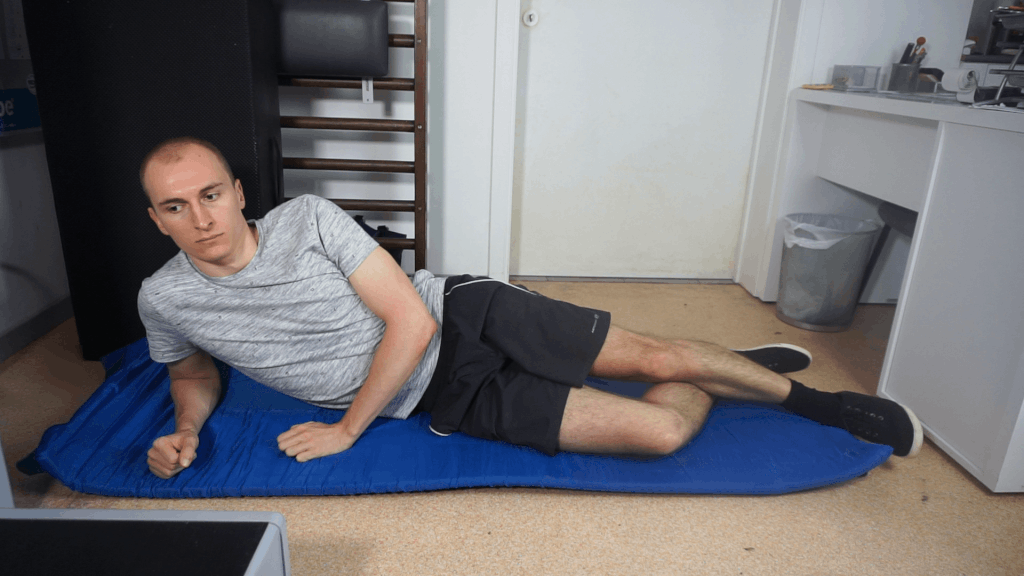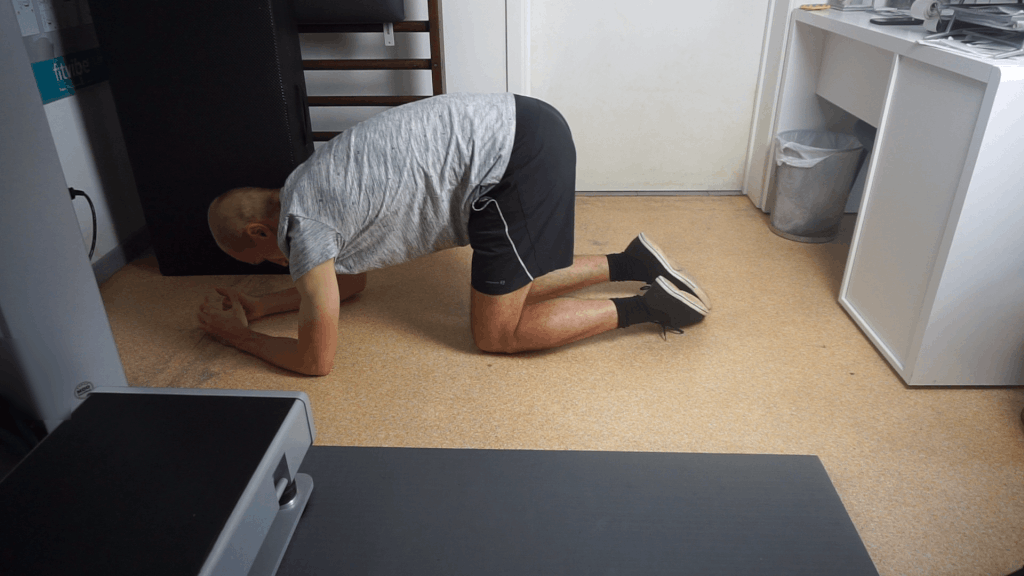Jumping jacks can be a nice addition to your exercise or warmup routine but they are not always ideal. Discover some alternatives you can do instead.
Some of the benefits of jumping jacks include improved endurance in your thigh and shoulder muscles, being a no-equipment exercise you can do at home, training your cardiovascular system, improving coordination, etc.
Some people are interested in an exercise that is easier on their ankles, knees, and shoulders, others don’t enjoy jumping jacks, and you could want a jumping jack alternative for other reasons too.
In any case, the exercises below could offer somewhat similar benefits while avoiding some of the downsides of jumping jacks.
Keep in mind that you can also do non-jumping jumping jacks by taking outward steps with one side at a time. Even so, there are better substitutes for jumping jacks if you don’t want to jump.
1. Jumping rope
Many people already discovered the exercise potential but there are definitely still a good amount of people that forget about this alternative to jumping jacks.
Jumping rope may sound like a game kids do but if you give it a try, you will notice that it really gets your heart beating faster.
Besides this area, jumping rope is also similar to jumping jacks in that it can burn a lot of calories, can improve coordination, does not have many equipment requirements, can strengthen your bones, etc.
At the same time, there are also differences.
First of all, jumping rope engages your shoulder muscles and joints less than jumping jacks. This can be good or bad depending on your body, training goals, and personal preferences.
Secondly, jumping rope tends to have a slightly steeper learning curve. In simpler words, it may take more time to learn to jump rope at intense speeds where you really get the benefits to a large extent.
2. Lying lateral leg raises
To do this next jumping jack alternative you preferably have a yoga mat or another similar soft surface. This will make the exercise more comfortable.
That aside, take the following steps to do a lying lateral leg raise:
- Lie down on one side with your body more or less straight. You can fold your knees slightly and put your upper arm on the ground for stability.
- Slowly raise your upper leg as far as comfortable without moving your hips. You can fold your leg if the stretched-leg version is too challenging.
- Lower the leg back to starting position in a controlled motion.
- Complete your sets and repeat the same number of repetitions on the other side to avoid muscle imbalances.

Some people think that cardio exercises like jumping jacks are enough to grow the muscles worked.
While you could still improve endurance in these areas, to really grow muscles you want to turn to resistance training exercises like lying lateral leg raises.
Doing this exercise with the right resistance and repetitions helps you grow and strengthen your outer thigh muscles.
People more experienced with resistance training may want to make the movement more challenging with equipment like a pair of ankle weights and resistance bands.
In other areas like cardio, inner thigh muscles, and shoulder muscles, the lying lateral leg raise is not a great substitute for jumping jacks.
3. Adductor raises
Adductor raises are another exercise that takes place on the ground. That means a soft surface will be helpful.
Take the following steps to do one adductor raise:
- Lie down on your side with your body in more or less one straight line. Move your upper leg forward or backward so that your lower leg has room to move.
- Raise your bottom leg as far as comfortable without moving your hips in a controlled motion.
- Slowly lower the upper leg again.
- Complete your sets and repeat the same number of repetitions on the other side.
Jumping jacks also engage your inner thigh muscles to move your legs back to the center. To really focus on these muscles in a way that is more comfortable on your knees, adductor raises can be a good idea.
Again, to train your cardiovascular health, outer thigh muscles, and shoulder muscles, you will need to choose different alternatives.
4. Pull-ups
To many people, pull-ups will be a surprising addition because it is an upper-body resistance training exercise. However, when you pull down your arms in jumping jacks, you engage similar muscles.
Pull-ups require you to have something like a doorway pull-up bar or another horizontal bar that is thin enough to grip. Once you have that, take the following steps to do the exercise:
- Hang from a pull-up bar with your hands at about shoulder-width with your hand palms facing forward.
- Slowly pull your body up until your chin is above the bar.
- Lower your body back into the position in step 1 in a controlled motion.
Pull-ups mainly work your latissimus dorsi which are the middle/upper back muscles and your biceps.
Instead of improving endurance in the lats like in jumping jacks, pull-ups are an alternative that is typically done with the goal of growing and strengthening the muscles involved.
5. Lateral raises
To do lateral raises you need some type of one-handed resistance. Some of the popular options are dumbbells or quality resistance bands but you can also use kettlebells, a cable machine, a heavy backpack, etc.
Once you have the required gear, take the following steps to do a lateral raise:
- Stand up straight with your feet about shoulder-width apart and a weight in each hand. Point your hand palms to the center and keep your arms slightly less than stretched throughout the exercise.
- Slowly raise your hands sideways and up until your upper arms are about horizontal.
- Lower your hands back into starting position in a controlled motion.
Lateral raises are similar to the upward movement of your arms during the jumping jacks.
Similar to the previous alternative, lateral raises are mostly done to actually grow and strengthen the deltoid (shoulder) muscles you work.
6. Plank jacks
The plank exercise is a popular no-equipment bodyweight movement. By making it more dynamic and changing the stance of your arms, you get plank jacks which can be a good alternative to jumping jacks.
Take the following steps to do this movement:
- Sit on your hands and knees with your hands about shoulder-width apart.
- Walk back with your feet until your body is in a straight line from your heels to the top of your head. Keep your shoulders above your hands.
- Jump up with your feet and move them outward.
- Jump up with your feet and return them to the position of step 2.
- Keep jumping in and out for a certain amount of repetitions or time.

Plank jacks can be a more knee-friendly alternative to jumping jacks for engaging your thigh muscles in a similar way. This exercise also really gets your heart beating.
This exercise is not a good substitute for jumping jacks if you are looking for a knee, shoulder, and jump workout. Plank jacks are also not ideal to reach the same cardiovascular intensity as jumping jacks.
Something else to note is that plank jacks can be challenging on core muscles like your abs and obliques. This can be good to improve endurance in these areas but also interfere with your cardiovascular workout.
7. Elliptical
The elliptical trainer is a relatively popular cardio gym machine. Using this machine may look a bit complicated at first but this exercise is actually very beginner-friendly.
Similar to jumping jacks, this machine alternative works your cardiovascular health and burns a nice amount of calories while engaging muscles in both your upper and lower body.
On the flip side, using an elliptical trainer is not a good replacement for jumping jacks in that all of the movements are more front-to-back instead of sideways.
This focuses more on muscles like your chest, front deltoids (shoulder), triceps, quadriceps, glutes, and hamstrings. Additionally, you work your outer thighs, inner thighs, and middle deltoids less.
Another potential downside is that you need a machine to get the benefits of an elliptical workout. That means you either need to invest in your own elliptical machine or join a gym.
Additionally, the elliptical machine tends to have less bone-strengthening potential than jumping jacks.
The upside of this last point is that the elliptical machine allows you to get in a good cardio workout in a way that is relatively easy on your knees.
Related posts:
